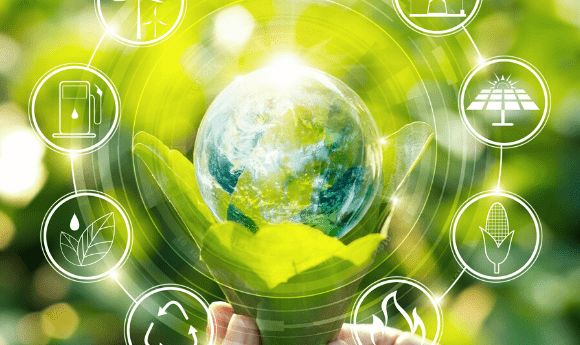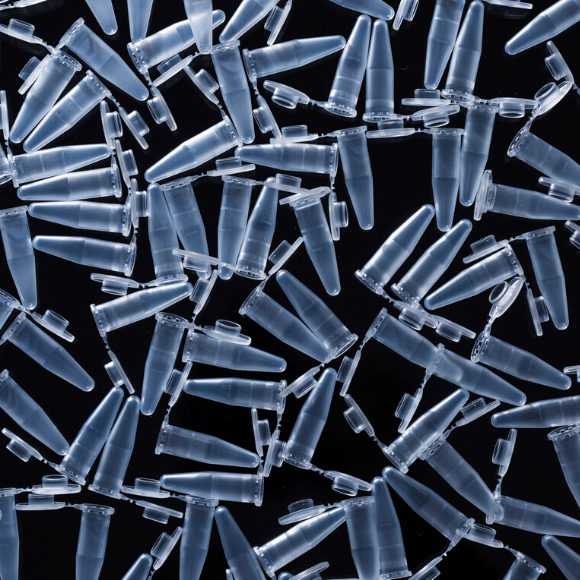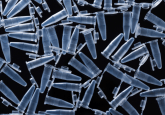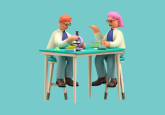Nicole Kelesoglu on science communication, sustainability and being more ‘labconscious’

Nicole Kelesoglu speaks to BioTechniques Editor in Chief Francesca Lake about ways to increase a lab’s sustainability and what the labs of the future could look like.
Please can you introduce yourself and tell us about your role?
 My name is Nicole Kelesoglu, as a blogger and editor for Labconscious, I seek out practical information on how to incorporate sustainability into life science laboratory work to share with our community. Interviewing scientists and sustainability experts who are solving problems is my favorite part of the work. Being interviewed myself is quite fun!
My name is Nicole Kelesoglu, as a blogger and editor for Labconscious, I seek out practical information on how to incorporate sustainability into life science laboratory work to share with our community. Interviewing scientists and sustainability experts who are solving problems is my favorite part of the work. Being interviewed myself is quite fun!
What led to your move from research to science communication?
It was difficult to leave the lab. Exploring the complexity of nature is just captivating. It’s also a noble endeavor since the cumulative outcome of the work can be applied to promoting human health and protecting our environment. What drew me into science communication was the good that I hoped to do to support those efforts.
Good science communication has important functions, right? There is a clear need to present science accurately to the public. Scientists themselves also benefit from high-quality sources of practical information. Science communication should orient readers who work outside of a focused area with context. It should present ideas that stimulate contemplation. I like the challenge.
One of your passions is lab sustainability – what are the main problems there?
Lab plastics are a huge focus for scientists. The worldwide recycling crisis was a real wakeup call on our part in plastic pollution. Global plastic pollution is awful. It carries persistent organic pollutants along in ecosystems. While more investigations are needed to determine if there are toxic effects from plastic’s inorganic components, biologists get plastic’s physicality.
The presence of microplastics in waterways and soil can negatively impact ecosystem energy flow. Barring some bacteria and waxworms, most organisms are wasting energy trying to digest plastic or microplastic materials. Studies have shown reduced reproductive rates in oysters and earthworms ingesting microplastics. Other research has established that microplastic can build up inside organisms and move up the food chain.
It’s clear that we do not want life science work to keep sending high volumes of plastic to landfills, putting nature out of equilibrium. What isn’t widely known is that there are already safe ways to reduce this.
Energy usage in labs is an even bigger sustainability issue in terms of unnecessary waste. Most scientists don’t realize that they can personally make a huge difference in wasted energy. Sometimes scientists are aware but hesitate to take recommended actions due to lack of access to proof-of-concept data. Sometimes scientists don’t have supportive technologies or services to facilitate energy saving. The ways that saving energy in labs drive scientific achievement also needs to be clearly and consistently communicated.
Life science is in a sustainability revolution, seeking opportunities to use less energy, incorporate green chemistry and produce less waste. Biologists want to practice environmental stewardship and improve lab productivity.
With life science company Sartorius signing up to the European Plastics Pact, is replacing single-use plastics in the lab on the horizon at last?
What would you say are your top tips for researchers who’d like to make their labs more sustainable?
The best tips I can share come from scientific organizations that have demonstrated what works.
- Be like Harvard University (MA, USA) and “Shut the sash!” Place a sticker on your chemical fume hood as a reminder.
- Be like the ECCC Aquatics labs (QC, Canada) and fix the mix! Post clear recycling signage with images will help to prevent lab recycling collection contamination.
- Process micropipette tips for safe, sterile reuse like University College London (UK) by using a pipette tip washer.
- Share lab equipment and space like the University of Colorado Boulder (CO, USA).
- Replace disposable lab plastics with glass when possible like UPENN Perelman School of Medicine (PA, USA) – i.e., Petri plates, volumetric pipettes and small glass flasks as substitute 15–50 ml conical tubes.
- Replace with greener chemical alternatives and recycle solvents like MIT (MA, USA).
- Purchase the right-size energy saving lab equipment with supplier incentive rebates like the University of California San Diego (CA, USA)
- Collaborate with lab equipment designers to communicate your lab needs like the University of Cambridge (UK).
- Automate feedback like the University of Virginia (USA) with building-wide or small lab equipment energy monitoring and programmable timers.
- Join the International Institute for Sustainable Laboratories (VA, USA) ULT freezer challenge like The University of Illinois, Urbana-Champaign (IL, USA)
- Earn My Green Lab certifications like the University of Alabama at Birmingham (AL, USA).
- Connect with other labs to develop standards like the Lab Efficiency Assessment Framework (LEAF), initiated by the University College London.
In this vein, you’re the Editor for Labconscious, a New England Biolabs (NEB; MA, USA) resource informing on green lab initiatives. Can you tell us more about it?
Happy to! New England Biolabs is a biotech with a scientist lead culture. At NEB’s Passion in Science awards last year, I was lucky to get the chance to ask NEB’s founder, Don Comb, why they have made protecting the environment such a priority since the beginning in 1979. I asked him if there was some advantage. I was thinking of morale and all those business ideas you hear about. Don laughed and said, “No, we did it because it’s the right thing to do!” Which was, of course, the perfect answer.
The Labconscious website collects and shares news about sustainable lab initiatives, green lab tips, innovative technologies and resources. NEB saw the need to foster an online community for scientists to encourage each other to go green. How to run an eco-friendly laboratory shouldn’t be an esoteric topic.
Each scientist has unique sustainable lab opportunities. Those opportunities will depend on the type of lab work and their local infrastructure conditions. Some multifaceted challenges can be daunting to approach. Scientists need practical tips and evidence that changes will support scientific productivity and protect the environment. Scientists that take part in the Labconscious community are eager to make informed decisions for their lab work.
What’s been exciting for me is to see how fast lab sustainability is taking off. When I started writing for Labconscious, information that was universally applicable seems to be spreading slowly in the life science community. There was a sense of sustainability being a distraction from doing science.
Today, life science is seeing a huge value and is digging in. Major research organizations are leading efforts to perform studies and share lab sustainability data. The non-profit My Green Lab (CA, USA) and the International Institute for Sustainable Laboratories, which originated from the US Environmental Protection Agency (DC, USA), has supported these efforts. Overseas, the LEAF project in the UK is developing standards to establish where to aim.
The lab plastic pollution challenge is a great example of the value of sharing information inside the life science community. Scientists need to know what their most sustainable material choice or action is given their waste services. Scientists who take the initiative to use lab materials and technologies designed to reduce lab plastic waste can help by sharing their experiences. Facilities need scientists’ feedback to effectively support sustainable choices. Sharing perspectives is how we get to the truth of what is verifiably sustainable. It’s an ongoing process.
What do you envision labs of the future will look like?
Wow! This area is developing so fast. I’m sure that some sustainable solutions that will be widespread in 5 years haven’t even been invented yet; however, I’ll give this question a shot.
In the future labs will be able to treat many plastic devices, like pipet tips and centrifuge tubes for reuse. Sterilized glass volumetric pipets will replace single-use plastic at benches. The microfluidics and robotics trends will explode, conserving resources and saving time. Lab spaces and equipment placement will account for safe and efficient air exchange. Lab equipment will be energy star rated. ULT freezers will be set to -70, instead of -80˚C based on easy access to data showing that specific biological sample types are safely stored at -70˚C. Lab equipment will have remote access monitoring and controls. Sample and chemical storage data will be accessible within lab groups. Lab cleanouts will occur yearly. Scientists will be able to use online platforms like Rheaply to share unused materials and equipment. Scientists will use department-shared cell culture facilities and benefit from well-trained and reliable support staff to make media and other common solutions. The NIH (MD, USA) and other grant funding sources will support activities that improve life science lab work productivity and protect our environment.
 Europe takes on plastics
Europe takes on plastics




